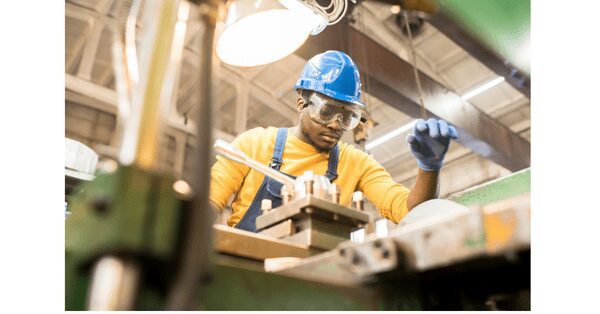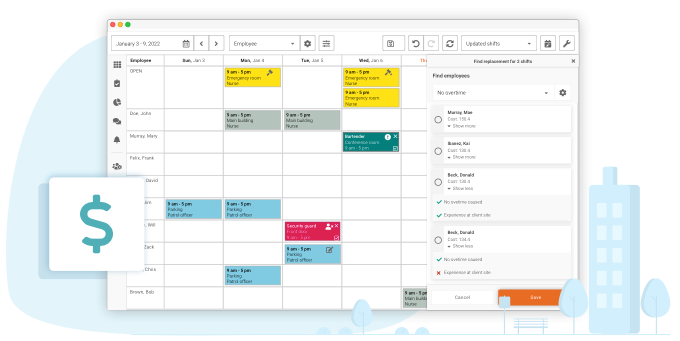
Manufacturing is an industry that is constantly evolving, and staffing is a critical component of its success. However, the recent past has seen significant challenges when it comes to manufacturing staffing. In this blog post, we’ll discuss some common manufacturing staffing issues and how to avoid them. We’ll also explore how Celayix can help solve these staffing issues.
Labour Shortage in Manufacturing
The labour shortage in manufacturing is a growing concern connected to the common staffing issues discussed in this blog post. According to a Deloitte and the Manufacturing Institute survey, the manufacturing industry may face a shortfall of 2.4 million workers by 2028. This shortage is caused by many factors, including retiring baby boomers, a need for more skilled workers, and an increasingly competitive job market.
The labour shortage in manufacturing can have several consequences, including decreased productivity, increased overtime costs, and missed business opportunities. In addition, the shortage of workers can lead to a higher risk of workplace injuries and accidents. According to the article “Labor Shortage in Manufacturing: Causes, Risks, and Solutions” by Liberty Mutual, the National Safety Council reported that the manufacturing industry had the highest rate of nonfatal occupational injuries and illnesses in 2019.

The article “3 factors affecting staffing in the manufacturing industry and how to overcome them” by Plant Services provides additional insights into common staffing issues in the manufacturing industry. The article identifies three factors that can affect staffing in manufacturing: the skills gap, changing demographics, and the industry’s image.
Manufacturing Staffing Issues
Skills gap
The skills gap refers to the gap between the skills employers need and employees’ skills. The manufacturing industry faces a skills gap as older workers retire and younger workers enter the workforce without the necessary skills. To overcome the skills gap, we recommend investing in training and education programs and partnering with local schools and universities to develop a pipeline of skilled workers.
Changing Demographics
Moreover, changing demographics also pose a challenge for staffing in manufacturing. As older workers retire, there are fewer workers available to fill their roles. We recommend attracting younger workers to the industry by offering competitive wages and benefits. This provides opportunities for career advancement and creates a positive work environment.

Job Perception
Finally, the image of the manufacturing industry can also affect staffing. Many people perceive manufacturing jobs as dirty, dangerous, and low-paying, which can discourage younger workers from entering the industry. To overcome this perception, the article mentioned above recommends highlighting the advanced technologies and skills required in modern manufacturing and the high-paying and rewarding careers available in the industry.
High Turnover Rates
One of the most significant staffing issues in manufacturing is high turnover rates. The manufacturing industry is known for high-stress environments and long hours, which can lead to employee burnout and dissatisfaction. For example, according to a survey by the National Association of Manufacturers, the average turnover rate in the manufacturing industry was 26.3% in 2020. Resultantly, high turnover rates can lead to increased costs associated with hiring and training new employees and a decrease in overall productivity.
To avoid high turnover rates, creating a positive work environment that values employees’ contributions is essential. Providing career advancement and training opportunities can also increase employee satisfaction and reduce turnover rates.
Lack of Skilled Workers
Another common staffing issue in manufacturing is the need for more skilled workers. As older workers retire, more younger workers with the necessary skills to fill their roles are often needed. According to a Deloitte and the Manufacturing Institute report, the manufacturing industry may need more than 2.4 million workers by 2028.
To ensure a sufficient number of skilled workers, investing in training and education programs is crucial to help build a pipeline of qualified candidates. This can include partnerships with local schools and universities and apprenticeship programs that provide hands-on training and experience.

Inefficient Scheduling
Inefficient scheduling is another common staffing issue in manufacturing. Poor scheduling can lead to overtime costs, understaffed shifts, and decreased productivity. According to a report by WorkJam, inefficient scheduling can cost companies up to 10% of their total labour spend.
To avoid inefficient scheduling, it’s essential to have a system that can accurately predict staffing needs and automate the scheduling process. This can include using advanced scheduling software that considers employee availability, skill sets, and other factors affecting staffing needs.
How to Avoid Manufacturing Staffing Issues
Here are some tips for avoiding staffing issues in manufacturing:
Implement an automated workforce management system:
Investing in a system like Celayix can help streamline the scheduling process and ensure that your workforce is utilized efficiently. This can help you avoid overstaffing or understaffing, which can lead to problems.

Build a talent pipeline:
Firstly, to avoid a skills gap, it’s crucial to invest in training and education programs and partner with local schools and universities to develop a pipeline of skilled workers. This can help ensure a steady supply of workers with the necessary skills.
Offer competitive wages and benefits:
Secondly, to attract and retain workers, it’s important to offer competitive wages and benefits packages. This includes health insurance, retirement plans, and paid time off.
Create a positive work environment:
Thirdly, a positive work environment can help attract and retain workers and lead to increased productivity. This can include offering opportunities for career advancement, recognizing and rewarding good performance, and fostering a culture of teamwork and collaboration.
Develop a flexible workforce:

Finally, to avoid manufacturing staffing shortages, it’s essential to develop a flexible workforce that can adapt to changing demands. This can include cross-training employees to perform multiple roles and utilize part-time or temporary workers during peak periods.
How Celayix Can Help with Manufacturing Staffing
Celayix is a workforce management software that can help solve many of the manufacturing industry’s staffing issues. With Celayix, manufacturers can:
- Streamline the scheduling process with automated tools that consider employee availability, skill sets, and other factors affecting staffing needs.
- Reduce turnover rates by providing a positive work environment and opportunities for career advancement.
- Build a pipeline of qualified candidates with training and education programs that can help develop the skills needed for success in manufacturing.
Companies need to implement strategies that attract and retain workers to avoid the risks associated with the labour shortage in manufacturing. This includes investing in employee training and education programs, offering competitive wages and benefits, and creating a positive work environment. Additionally, companies can utilize workforce management software like Celayix to streamline the scheduling process and maximize the productivity of their existing workforce.
In conclusion, manufacturing staffing issues are a significant challenge facing the industry. However, by investing in employee training and education programs, creating a positive work environment, and utilizing workforce management software like Celayix, manufacturers can overcome these challenges and build a thriving workforce.





